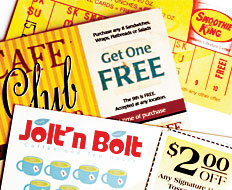Q: What are three important things to keep customers coming back and building new customers into repeat customers?
A: It’s very smart to be asking about building repeat business. After all, many analyses show it costs a company more to get new customers than to keep the ones it has.
Delighting your guests with an outstanding customer experience is, of course, the best way to ensure they’ll come back. No strategy or promotion is going to trump that.
But beyond delivering a great experience, generating repeat business is usually a matter of increasing the frequency of a customer’s visits. If a customer only comes to you once a month on average, the opportunity is to bump that up to two or three times a month. If it’s once a week, you want them at least one more time.
To increase visit frequency, it’s helpful to understand why customers aren’t coming more often in the first place. I can think of at least three reasons.
The first, and in this economy probably most important, reason is price. Some customers may think your prices are OK for an occasional treat, but not for a regular meal. If you want them to come more frequently, you need to offer products at accessible price points. Accessible means different things in different markets, but it’s clear that if your prices are significantly higher than your competitors, you’re going to miss out on some visits.
You also need “everyday low prices.” A discounted price may drive an increase in traffic during the promotional period, but visit frequency is likely to revert back to its normal level afterward.
A range of price points might be your best bet. Offer some higher-priced items for the occasional indulgence and dollar-menu-style pricing on products that seem like staples. Also, offer smaller items, sides, and snacks so that people can combine them into meals to fit their budget.
Another possible reason why you don’t have more frequent visitors is meal occasion. It may be that some customers think of your restaurant for only one type of visit. They may only use you as a take-out place for dinner, or you’re on their quick-lunch-places list. To prompt them to visit more frequently, you need to get them to put you in several different mental files.
This requires overt actions; changing the way people think is hard work. One idea is to put signage in your drive-thru window that suggests people bring their family and dine in next time. Maybe you can try promoting breakfast offerings on tray-liners during the dinner hour, or stuffing take-out bags with catering menus.
Occasion-based promotions help. Starbucks’ “Treat Receipt” program is a great example. Customers who purchase a drink in the morning are offered a discount on an iced drink after 2 p.m. that same day. Not only does the program prompt an additional visit, but it also exposes customers to a different experience (a relaxing afternoon break versus a rushed morning purchase), which gets them to think of Starbucks for different occasions.
Multiperson meal combos, like Burger King’s “Meal for Two” and “Family Bundle” combos, are another growing trend that may help lunch places attract more dinnertime visits.
Type of food is the third reason I suspect people visit some restaurants less frequently than their owners would like. Some concepts just don’t lend themselves to frequent visits. Their menus are too limited or their food is too distinctive.
This is a harder barrier to address. Your concept is your concept and you shouldn’t change it to chase customers. But limited-time-only menu items are an effective way to make more frequent visits seem appealing. The key is to offer LTOs regularly so that customers’ increased visitation is sustained over time. Souplantation/Sweet Tomatoes, a 115-unit chain of salad-bar-style restaurants, features new items every month. The novelty and variety attracts people who may otherwise only want to eat at that type of restaurant occasionally.
Increasing frequency may simply be accomplished by increasing exposure. With so many restaurants out there these days, it’s easy for one to just drop off people’s radars. You need to be out promoting your restaurant consistently. Advertising provides great air coverage if you can afford it, but there’s nothing more effective than getting out and regularly engaging with your community. And by community, I mean both off- and online. Use local events, neighborhood canvassing, and targeted mailings to maintain visibility in real life. Use social networks and mobile applications to stay salient virtually.
Finally, loyalty programs like punch cards or rewards points can stimulate increased frequency, but I wouldn’t rely on them as the primary method to convert new customers into repeat ones. They’re transactional instead of relational—they focus on increasing the number of purchases or amount of money customers spend at your restaurant instead of increasing their affinity to your brand. Also, they require customers to be loyal to you first, instead of emphasizing the things you do to serve them well and showing your loyalty to them, which is what prompts a response that’s authentic and enduring.








